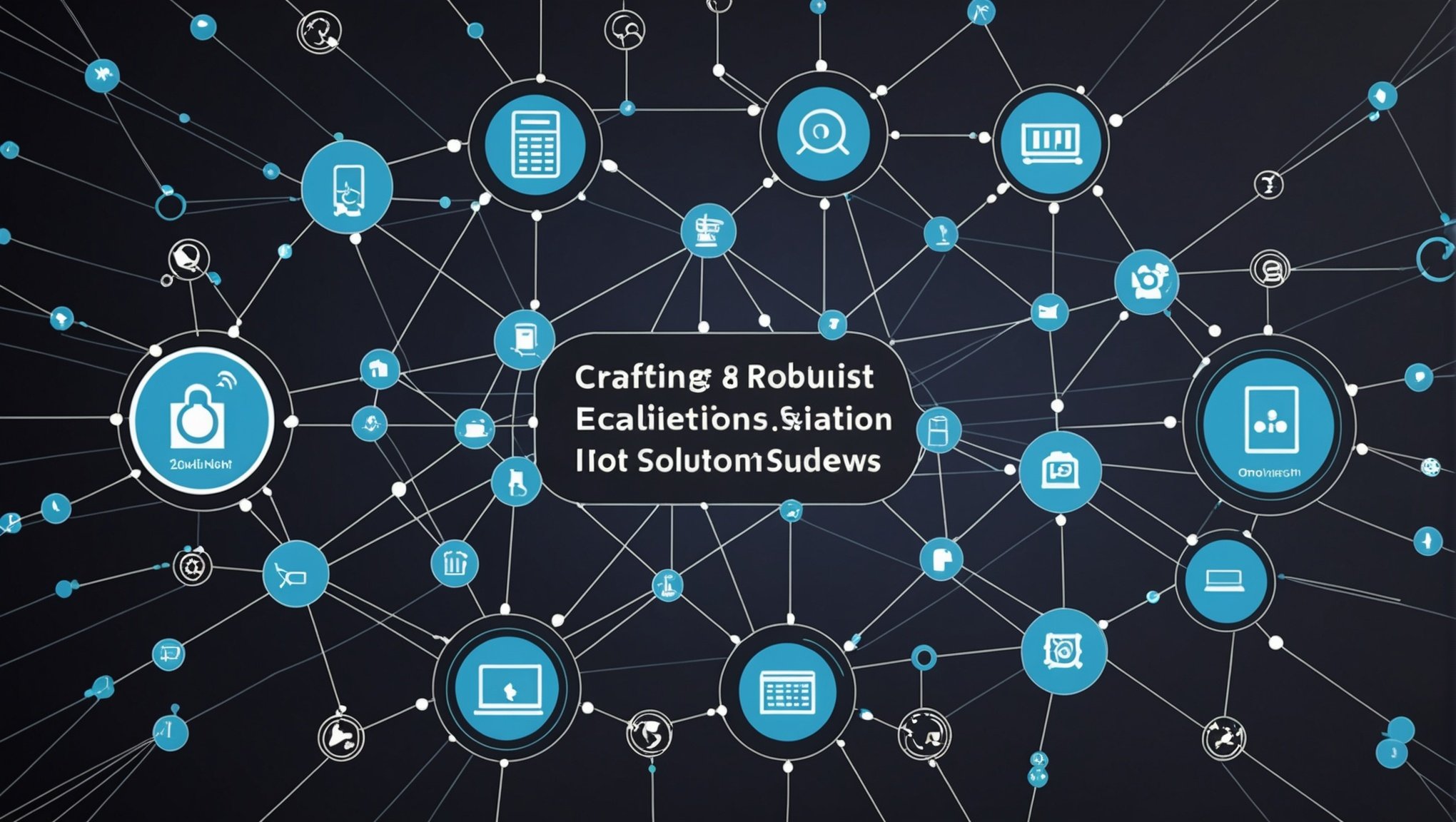Understanding the Importance of a Network Framework for IoT
In today’s interconnected world, Internet of Things (IoT) is transforming how devices communicate and function. As IoT rapidly expands, the need for a robust IoT network framework becomes crucial. Its significance lies not only in enabling seamless connectivity but also in supporting IoT scalability. Consider the millions of IoT devices projected to connect in the near future; without a proper framework, managing this vast network could become chaotic.
A well-designed network framework ensures devices operate efficiently, promoting growth and innovation. Imagine a smart city reliant on IoT; network design faults could cause disruptions in essential services. Therefore, adopting a scalable framework can significantly aid in mitigating such risks.
Additional reading : Maximize your online privacy with rotating residential proxies
Challenges inevitably arise without a structured network design. Unplanned networks face bottlenecks, security vulnerabilities, and management issues. Scalability becomes an uphill battle, as integrating new devices without disrupting the existing system proves difficult. Moreover, the absence of a cohesive structure can lead to suboptimal data handling, affecting decision-making processes.
In essence, a scalable and structured IoT network framework is vital for managing complex networks, enhancing device communication, and future-proofing IoT systems. This strategic approach not only optimizes current operations but also sets the stage for future advancements.
Also to discover : 3g proxies vs interception proxies: which one reigns supreme?
Key Components of an IoT Network Framework
In the realm of IoT network components, several elements work together to create a seamless network architecture. To begin with, sensors and actuators are fundamental. They collect and respond to data from the environment, effectively forming the initial layer of any IoT network. Following this, gateways play a crucial role in bridging sensors with cloud servers, ensuring data is efficiently transferred through appropriate channels.
Network architecture is typically divided into multiple layers. Firstly, the perception layer captures and processes data using sensors. Next, the network layer forms the communication backbone, transmitting data to cloud services. Finally, the application layer acts as the interface through which users interact with IoT devices. Recognising these layers is vital for deploying robust and scalable IoT solutions.
Communication protocols are the lifeline of IoT networks. Protocols like MQTT and CoAP ensure secure, reliable data exchanges between devices. They maintain connectivity even under resource constraints, which is essential for IoT’s real-time operations. Understanding these protocols’ roles enhances the effectiveness of an IoT setup, facilitating a coherent interaction between components whilst maximising operational efficiency. Consequently, this integration supports the practicality of IoT implementations and addresses various situational demands.
Methodologies for Designing IoT Network Frameworks
In the realm of designing IoT frameworks, adopting comprehensive methodologies is crucial for effective network integration. Agile and DevOps have become popular methodologies due to their adaptability and speed. Agile focuses on iterative development, which allows for regular testing and feedback. This ensures the network design aligns closely with user requirements and experiences.
DevOps, on the other hand, integrates both development and operations, fostering a collaborative environment. This integration leads to increased efficiency and quicker deployment of IoT network solutions. By using these methodologies, organisations can create robust and flexible IoT frameworks.
Best practices play a vital role in the process. Implementing layered security approaches and ensuring data interoperability are essential components. A focus on scalability ensures that IoT networks can grow alongside technological advancements and increased demands. Monitoring and optimization throughout the design phase help identify potential issues early.
Cross-disciplinary collaboration enhances the quality of network design by bringing together different expertise. It encourages innovative solutions that address complex challenges inherently present in IoT networks. By merging insights from various fields, designing IoT frameworks becomes a comprehensive process, ultimately leading to more resilient and efficient networks.
Architectural Considerations for IoT Solutions
The architectural design of IoT solutions plays a crucial role in achieving efficient and reliable operation. Here, we consider the distinctions between cloud vs. edge computing in IoT architecture.
Cloud computing centralizes processing and storage, offering significant computing resources and scalability. It is ideal for applications requiring large-scale data analysis. However, it may face latency issues due to data travel time to data centers. Conversely, edge computing processes data closer to where it is generated, minimizing latency and optimizing real-time processing, which is beneficial for applications needing immediate response.
When designing IoT systems, selecting an appropriate network topology is fundamental. Topology affects communication efficiency, reliability, and scaling capabilities. Mesh topology, where each device is interconnected, enhances communication reliability and is resilient to node failure, though it can be complex to manage. Star topology, with a central hub, offers simplicity and ease of management but may present a single point of failure risk.
Finally, key architectural styles in IoT architecture include service-oriented architecture (SOA) and event-driven architecture (EDA), both delivering unique strengths for system modularity and scalability. Careful assessment of these elements ensures a tailored, effective IoT solution.
Scalability Strategies for IoT Frameworks
To accommodate the rapid expansion of the Internet of Things (IoT), implementing scalability strategies is crucial. One effective approach involves adaptive networks. These networks dynamically adjust and manage the increased load associated with constant IoT growth, ensuring seamless operation without the need for constant manual intervention.
Techniques for Ensuring Scalability
Several techniques can enhance IoT scalability. Load balancing is paramount; it distributes traffic evenly across servers, preventing bottlenecks. Additionally, leveraging edge computing reduces latency by processing data closer to the source rather than relying solely on centralised cloud infrastructures.
Role of Adaptive Networks
Adaptive networks play an invaluable role in managing IoT ecosystems. By flexibly re-routing data paths and reallocating resources as needed, they respond swiftly to fluctuations in network demand. This agility ensures both scalability and robust performance despite varying loads.
Case Studies on Scalability
Case studies provide insights into successful scalability implementations. For instance, a smart city project in Barcelona focuses on IoT growth management. By adopting a combination of edge computing and adaptive techniques, they efficiently handle data from thousands of sensors. This example underscores the feasibility and benefits of robust scalability strategies in real-world applications.
Case Studies and Real-World Examples
IoT’s transformative power is best captured through its successful implementations across various sectors. Consider the healthcare industry, where IoT networks have significantly improved patient outcomes. For example, wearable devices, operating within IoT frameworks, enable real-time monitoring, alerting healthcare professionals to crucial changes in patients’ conditions.
In another sector, agriculture, IoT has revolutionised traditional practices. Precision farming, supported by IoT technologies, allows farmers to enhance crop yield by providing targeted irrigation and fertilisation based on real-time data. These real-world applications show how IoT can optimise resources, reduce costs, and increase productivity.
Successful IoT implementations teach valuable lessons. Firstly, an adaptable and robust IoT framework is essential. For example, scalability allows networks to grow with business needs. Secondly, data security within IoT networks cannot be overlooked, as protecting sensitive information is paramount across all industries.
These success stories demonstrate the impact of IoT on achieving business objectives. Whether it’s improving patient care or increasing agricultural efficiency, IoT’s role in driving innovation and success is undeniable. By analysing these successful integrations, other businesses can glean insights to craft their own IoT strategies, promising enhanced efficiency and improved outcomes.
Practical Steps for Implementation
Implementing an IoT network can seem overwhelming, but breaking it down into practical steps simplifies the process. This step-by-step guide will assist with a smooth IoT deployment.
Start with planning the architecture. Identify the purpose of your IoT system, and map out the required components. This includes devices, sensors, networks, and platforms. Planning helps to clarify your objectives and optimise resource use.
Next, choose the right technology that fits your needs. Consider factors like connectivity options (e.g., Wi-Fi, Bluetooth, cellular), device compatibility, and scalability. The chosen technology plays a vital role in the system’s efficiency and future growth.
Deploying an IoT framework involves installing hardware and configuring software. Ensure that devices communicate effectively by setting up a robust network infrastructure. Security protocols should also be in place to protect sensitive data.
Testing is essential. Rigorous validation will guarantee performance and address potential issues before full-scale deployment. Monitoring tools offer insights into the system’s functionality, ensuring everything proceeds as planned.
Finally, ongoing maintenance and updates are pivotal. The dynamic nature of technology necessitates regular updates to maintain system performance and security. Schedule periodic reviews to adapt to evolving needs and incorporate advancements.
Future Trends in IoT Networking
In an ever-evolving digital age, the future of IoT is brimming with possibilities. As technology advances, emerging technologies will dramatically shape next-gen IoT networks. For instance, advanced machine learning and edge computing are poised to enhance IoT capabilities by enabling smarter data processing. This results in real-time decision-making, crucial in environments where prompt actions are required.
5G networks are another pivotal component, offering unprecedented speeds and low latency to support immense volumes of IoT devices. The introduction of 6G is anticipated to further propel IoT’s potential by facilitating more seamless connections and enhanced data transmission.
Looking ahead, predictions for the future landscape of IoT envision a world where interconnected devices become integral to daily life and industry. Autonomous vehicles, smart cities, and even personalized healthcare systems exemplify the untapped potential IoT holds.
Staying ahead in network design innovations is crucial as it ensures these technologies can thrive. Emphasis on robust security measures and scalable architectures will be key. By adopting these innovations, businesses and developers can leverage the full scope of IoT’s potential, ensuring adaptability in a rapidly changing digital environment.











